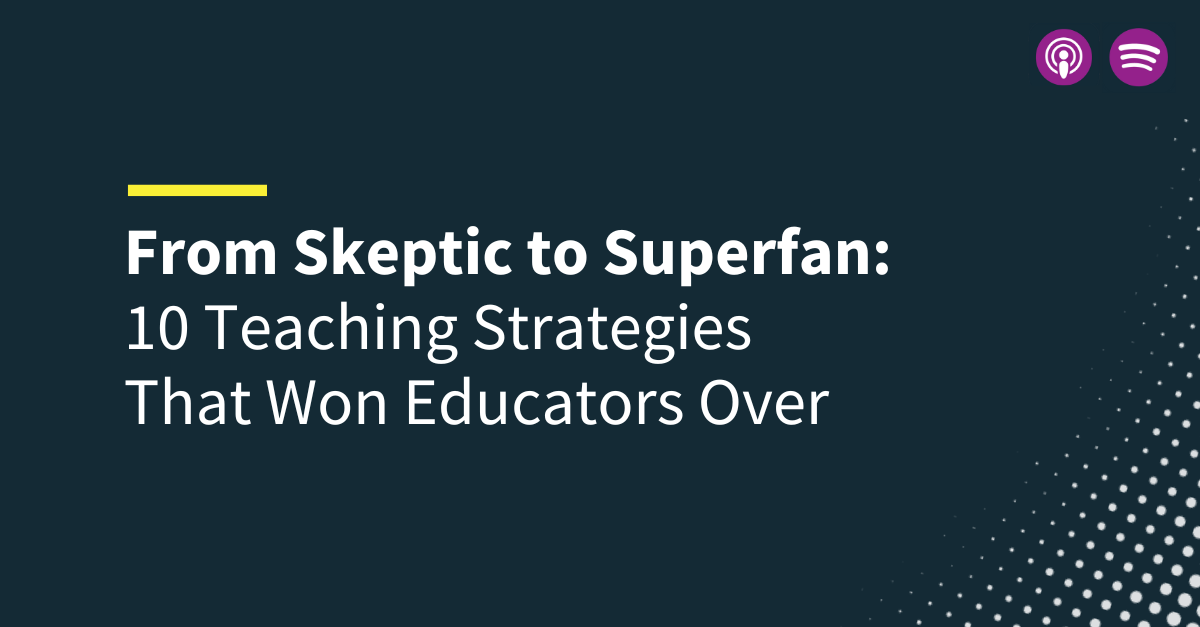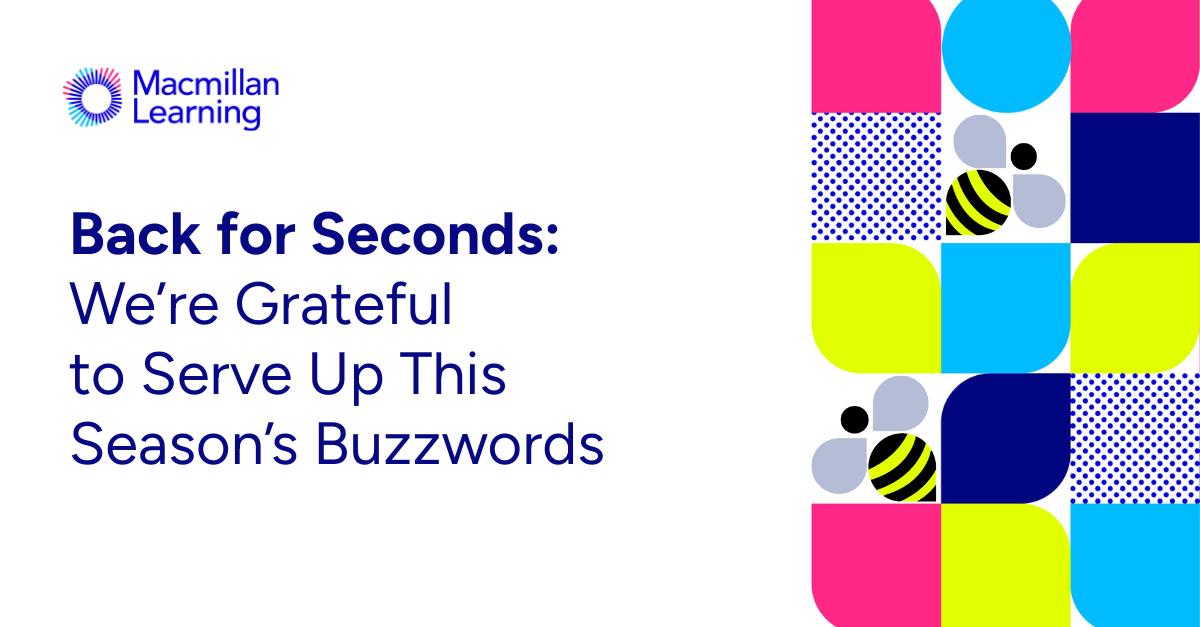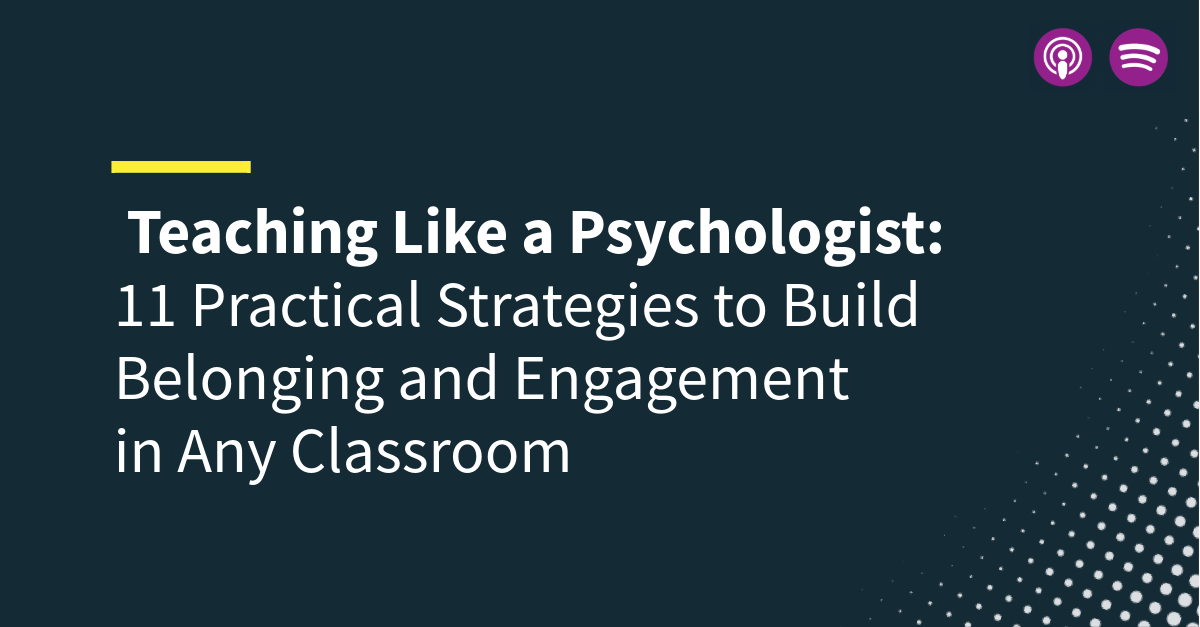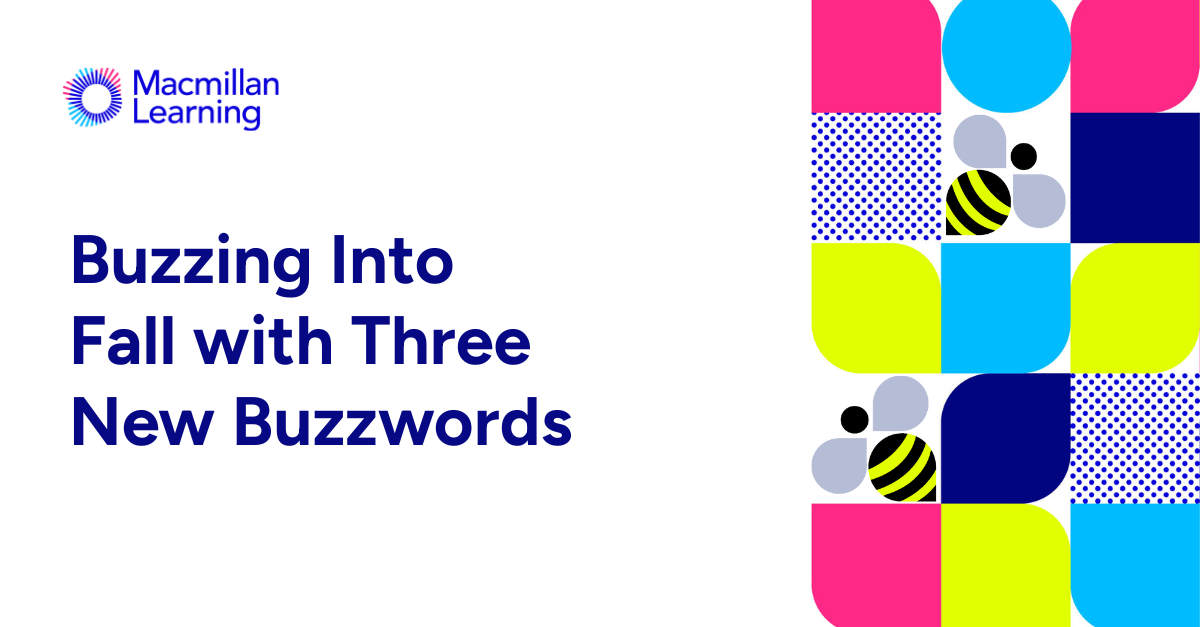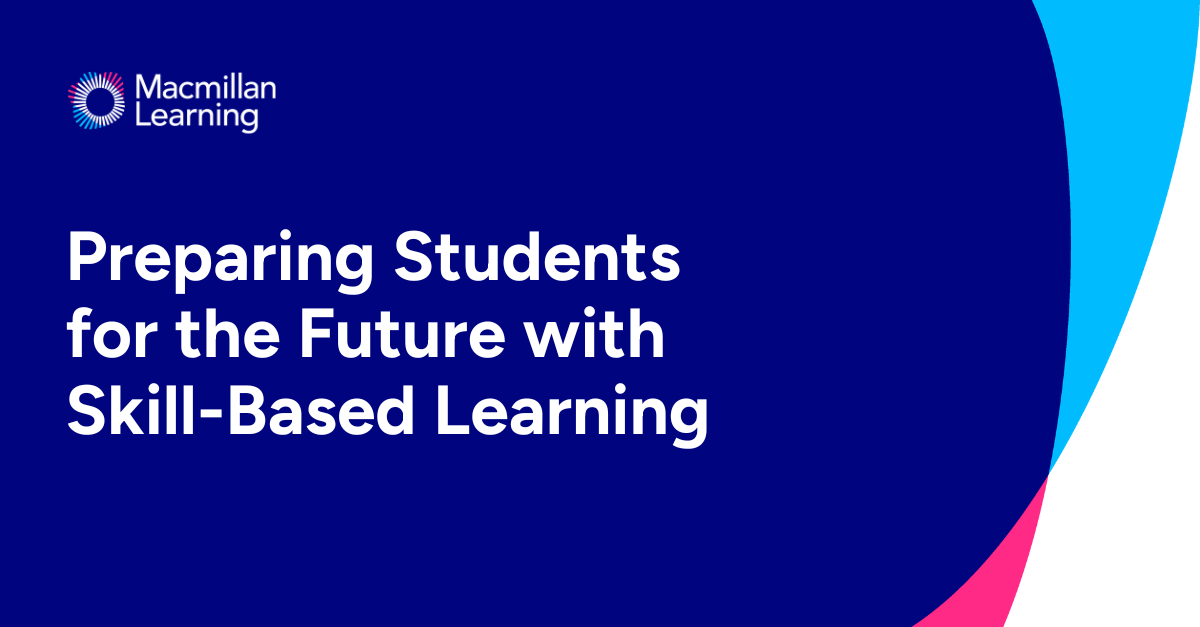-
About
Our Story
back- Our Mission
- Our Leadershio
- Accessibility
- Careers
- Diversity, Equity, Inclusion
- Learning Science
- Sustainability
Our Solutions
back
-
Community
Community
back- Newsroom
- Webinars on Demand
- Digital Community
- The Institute at Macmillan Learning
- English Community
- Psychology Community
- History Community
- Communication Community
- College Success Community
- Economics Community
- Institutional Solutions Community
- Nutrition Community
- Lab Solutions Community
- STEM Community
- Newsroom
- Macmillan Community
- :
- Newsroom
- :
- Learning Stories Blog
Learning Stories Blog
Options
- Mark all as New
- Mark all as Read
- Float this item to the top
- Subscribe
- Bookmark
- Subscribe to RSS Feed
Learning Stories Blog
Showing articles with label 2020.
Show all articles
Macmillan Employee
10-30-2020
09:05 AM
People watching has become my favorite pastime during the pandemic. I watch out my window while a woman does yoga on her rooftop. Down below on the street there are bike riders, street cleaners, essential workers commuting, and morning runners. From my perch, I can make stories for each of them based on what I see. But what about what I can’t see? Does the woman doing yoga have a new heart? Does that runner have Crohn’s Disease? Is that nurse headed to work dyslexic?
Too often, when people think about disabilities, they imagine individuals in wheelchairs, or a person with a guide dog … and while some disabilities are visible, many are not. These are invisible disabilities, which the Invisible Disabilities Association defines as “a physical, mental or neurological condition that is not visible from the outside, yet can limit or challenge a person’s movements, senses, or activities.” And if we are not careful, they can limit a person’s educational opportunities.
According to the National Service And Inclusion Project, among all people with disabilities of working age (29.4 million), 52% are employed. An accessible education is not the only change needed but it’s one important step in helping to increase that number.
Because disabilities are not always visible, it can be a challenge to create assignments and workloads that support all students. It’s an especially challenging time during COVID, where much of learning is taking place remotely. We put together some tips to help instructors support accessibility and all student learning, including those with disabilities they may not be able to see.
Tip One: Sometimes, students with invisible disabilities are perceived as lacking in intelligence, not paying attention, or even lazy. While some students will choose to disclose a disability to instructors, many will not. And, even if your student does share that they have a disability, they are not required to give you the details. Assuming that a student that isn’t achieving with the existing course structure is anything but doing their best is a dangerous path to go down. Work with these students to identify the points where they are struggling. It’s possible that being easily distracted or frequent bathroom trips might mean that they need extra time on tests. Chronic pain or fatigue may mean that a student needs extra time to turn over assignments or opportunities to use alternative formats. In Macmillan Learning’s course platform, Achieve, instructors can create student exceptions for assignment deadlines.
Tip Two: Find course materials that all students can use. For example, Macmillan Learning produces e-books in EPUB3 format and include accessibility metadata, short and long alt text, clear structure and organization, and a variety of navigation methods including page and heading navigation. The e-books reflow and respond to magnification, so the text is readable at 200% magnification. We also prioritize keyboard navigation and reading order in our e-book development. Macmillan Learning has a policy that allows 10 pages to be printed at a time and the copy/pasting of 2 pages at a time. And of course, beginning in 2019, all our e-books are Global Certified Accessible by Benetech. Bringing products that are already accessible to your class gives students the chance to be successful from the onset and allows them to make the personalizations they need to be successful.
Tip Three: If you’re creating materials and documents for your class or sourcing open educational resources, make sure they are accessible before you post them. Here’s a checklist to help you make accessible documents. We also have free checklists for .pdfs and slides on our Accessibility page on our website. Remember that accessibility is about more than passing the automated checkers that you can find in these tools. Try to limit the quantity of information you provide on slides - packing a single slide with information can be overwhelming for students. Could that pdf be a word document? Students can resize text, change the amount of information on each page, and resize images in a word doc in ways they can’t without an expensive editor in pdf.
Tip Four: Are your students no longer in your classroom? Consider how Universal Design could help enable teaching and learning. Reading from the text is a helpful learning experience for some students but can you present the information in the textbook in additional, alternative formats? Consider integrating an online lab experience so students can have a more hands on interaction with the materials or integrating interactives that focus on important concepts.
Recently, I was sent the definition of disability used by We Need Diverse Books:
“We subscribe to a broad definition of disability, which includes but is not limited to physical, sensory, cognitive, intellectual, or developmental disabilities, chronic conditions, and mental illnesses (this may also include addiction). Furthermore, we subscribe to a social model of disability, which presents disability as created by barriers in the social environment, due to lack of equal access, stereotyping, and other forms of marginalization.”
The reason this definition resonates with me is because it includes not only what disability is but also how we can, unintentionally, create an ableist environment. Building, buying, and implementing accessible environments for students is important to their future whether they are continuing to more schooling or entering the workforce.
At Macmillan Learning, we take our commitment to providing accessible materials seriously. If you’d like to learn more about accessibility visit the Accessibility page on our website. We also encourage feedback from students and instructors on what we can do to improve and welcome any feedback about our resources or suggestions about future resources at webaccessibility@macmillan.com.
... View more
Labels
-
2020
-
Accessibility
7
0
5,868
Macmillan Employee
10-16-2020
10:13 AM
Statistics have been used to inform us, change our minds, and even to shock us. From polls telling us who is winning various political races, to commercials telling us about a toothbrush recommended by nine out of ten dentists, to the rise of ocean temperatures over time, facts and figures inform the stories that help us understand the world around us. We spoke to communications instructor and Media and Culture: Mass Communication in a Digital Age author Richard Campbell about how he teaches his students about the stats behind the stories (and the stories behind the stats) and the storytelling at the intersection of journalism and statistics.
Marisa Bluestone: A bit of a chicken and egg question, but what do you think comes first -- the stats or the stories?
Richard Campbell: You can’t have the story without the data, without the stats. The jobs of the news narrative is to transform hard data into something an audience can understand. Bill Kovach and Tom Rosenstiel wrote in their seminal book The Elements of Journalism that the job of the journalist is “to make the significant interesting.”
Data by itself is not interesting or understandable to a general audience. But a good narrative by a reporter who does her homework and asks good questions of the right sources can transform the data into a compelling story. Too much mediocre news, however, takes “interesting” stuff -- like a celebrity scandal or an outrageous tweet – and makes it seem significant just by the act of reporting it as news.
Marisa: This could be an entire course, but what quick tips do you have for students to help them translate statistics into stories, or visa versa? Richard: Funny you should ask this. The Stat+Stories podcast grew out of a course. At Miami, John Bailer -- chair of the statistics department -- and I had worked together to get a quantitative literacy requirement into our college’s curriculum. As part of that initiative, we team taught an honors class called “News and Numbers” in 2009 and developed the podcast in 2013.
As a one-time reporter and long-time journalism educator (with some math phobia issues), I remember how nervous I was in that first class with John. But when he put up a data graph culled from a national newspaper and asked the students, “What’s the story here?”, I relaxed. Storytelling is something I knew about and to realize this renowned statistician expected a good data chart to tell a story put me at ease. John and I had common ground. We would start every class with some graph or news story form a news site that relied on statistics and John would lead the students through a critique of what stories did a good job and what stories needed work.
My job was to improve their narratives. So one tip is to start a data-based report, not with data and numbers, but with a story that illustrates the impact of the data. For example, do not begin a news story on homelessness with data and percentages. Start the report by telling about a family impacted by homelessness and then lead your audience to the big picture and what the data tell us about the significance of the problem. But first you need to make an emotional connection to your audience. A story does that. It is hard to make such a connection early in a news story by using big numbers.
Marisa: How have recent advancements in data visualization changed the way you teach communications courses? Richard: At Miami, the statistics department also started a course, in collaboration with the graphics design department and the journalism program, on data visualization. Although I am retired now, I would encourage anyone teaching design or statistics to think about how graphic and data illustrations might be accompanied by a good narrative that help people understand the visuals. A lot of folks are used to making sense of the world through written or video narratives not through a dazzling graphic chart or complex statistical tables. But in combination, we might have a better chance of reaching more of the general audience.
Marisa: It's election season. What role will stats play in how the presidential election is covered? What role should they play? Richard: I assume you mean stats on political polling and not all the other statistics that are truly important --- like data on income disparities, or unemployment related to the Covid-19 crisis, or the higher percentages of Black and brown people mistreated or killed because of systemic racism. Unfortunately, during a national election, most mainstream TV news outlets obsess over polls – who’s ahead and who’s behind. This is not my area of expertise, but I can report on what experts have told us on our podcast.
Back in 2016, the national polls were within the margin of error. Clinton won by two percentage points – or 3 million votes. But some of the state reporting was flawed, since many formerly “unlikely voters” voted, and Trump eked out an electoral victory by narrowly winning Michigan, Wisconsin, and Pennsylvania.
For 2020, statisticians and pollsters again warn of uncertainty. Determining “likely voters” in the age of Covid-19 and mail-in voting may be a crap shoot. Additionally, increases in robo calls in swing states have made many people more wary of answering their phones. Other than suggesting trends over time, we just don’t really know with any certainty how accurate polls are.
Marisa: Do you think there's room for opinions in data storytelling, or should it all be fact based? Richard: Good journalism throughout much of the 20 th century traditionally tried to separate opinion and analysis from basic news stories, in which reporters learned to keep their opinion out of news reports and attempted to interview multiple sources. Even today most newspapers relegate opinion essays to the editorial and op-ed pages. If a newspaper runs an analysis piece on the front page, it is usually labeled as such.
Cable TV news began blurring these distinctions, especially with the arrival of Fox News in the mid-1990s. Still, even on Fox News, there is generally fairer and more complete reporting in the midday hours before the wave of opinion talking heads ascend in the evening. But this is also true of MSNBC, with its nightly line-up of liberal and progressive talking heads. Still, the best opinion pieces are informed by good reporting and not just cable hosts spouting whatever comes to mind as they try to fill their allotted hour of time.
The tragedy, of course, is that many viewers think what they are getting in the evening is fair and balanced reporting. In fact, cable TV news in the evening -- and nationally syndicate conservative and libertarian talk radio throughout the day -- have filled the void created by the loss of many local newspapers. In the last 20 years, the U.S. has lost more than half the workforce of daily newspaper reporters -- from 56,000 in 2001 to fewer than 27,000 today.
A landmark 2017 University of North Carolina study identified 1,300 U.S. communities as “news deserts” – with no local print or digital reporting. In 2020, that figure has jumped to 1,800. About 2,100 daily and weekly papers have stopped publishing since 2004. According to a 2019 Brookings Institution study, millions of Americans see only national stories, and many of those “have a strong partisan bent” or “focus heavily on partisan conflict.” More alarming still, Brookings found the decline in local reporting has been accompanied by “a diminished capacity to hold elected officials and other local leaders accountable and a general disengagement from local politics.” Evidence that we have gathered in Ohio suggests too that letters and comments to editors at small-town papers are now less likely than in the past to focus on local issues. Instead, many merely parrot cable TV talking points.
Marisa: Is there anything I didn't ask you about, but should have? Richard: I would like to recommend that every journalism student take statistics or quantitative literacy courses and that every math and stats major take journalism courses (plus, all our high schools should be requiring quantitative literacy classes). The ability for mathematician or scientists to translate the complexities of their work into a story for a general audience is key to challenging the anti-science and anti-evidence strains running through our mediated culture.
Richard Campbell is professor emeritus and founding chair of the Department of Media, Journalism and Film at Miami University and has been teaching for 48 years. For Bedford/St.Martin’s Press, he is the lead author of three textbooks, including Media and Culture: Mass Communication in a Digital Age, now in its 12 th edition. He is also the author of 60 Minutes and the News: A Mythology for Middle America and co-author of Cracked Coverage: Television News, the Anti-Cocaine Crusade and the Reagan Legacy. He also was a print reporter and broadcast news writer in Milwaukee and was high school English teacher and girls’ basketball coach in the Milwaukee Public School system.
... View more
Labels
-
2020
0
0
7,294
Macmillan Employee
09-29-2020
11:36 AM
Student engagement. It’s a struggle that instructors regularly list as their top concern in surveys on teaching during the pandemic. Though maintaining students' attention, curiosity, motivation and passion for learning has been a topic of interest for instructors for some time, these challenges are more pronounced this fall with digital fatigue, distractions at home, lack of one-on-one interaction, and connectivity challenges.
While most instructors now have some experience teaching classes online, having done it once before during the Spring semester, many continue to seek new and innovative ways to support student engagement.
There’s no shortage of ways that instructors can facilitate the joy of learning and connect with their students, and we’ve curated some of the ones that we’ve seen work successfully using the technologies and methodologies that we know best.
At the Start of and During Class:
Ask the class content-focused opening questions: Retrieval practice is a great way to begin each class, as it allows students to activate knowledge from either pre-class activities or a previous class. There are a few variations of this, including using opening questions on your lecture’s first slide, and removing it from view after a few minutes to encourage students to show up on time. You can also choose to give students credit for answering the opening question orally, in writing, or with a student response solution like iClicker.
Help students to focus by engaging with technology: With a virtual environment, it’s easy for students to get distracted with other content, texts and games on their phones and laptops. The new iClicker Focus feature helps students to self-regulate their behavior to stay engaged solely with the iClicker app for the duration of the class.
Chunk out content: Research indicates that students’ attention declines throughout the lecture. This can be compounded in a remote environment, with distractions making concentrating even more difficult. Chunking out information in seven to ten minute increments helps reset attention spans. and beginning each content segment with a polling question, helps activate students’ thinking by requiring them to engage with the content. This can be done using a variety of question types, and with a click of a button using iClicker’s diverse question types (i.e. anonymous, short answer, target, etc).
Administer low-stakes, formative assessments: Frequent formative check-ins offer students an indication of their performance, giving them an opportunity to improve their knowledge and grades ahead of exams. You can accomplish this synchronously or asynchronously with iClicker’s Polling or Quizzing features in class or by using the Assignment feature that students can complete outside of class sessions. The feature can be used to support asynchronous learning or “flip” your in-person class sessions.
Create an on-screen action: Whether teaching synchronously or asynchronously, you can move beyond static, text-heavy slides by incorporating illustrations, YouTube videos, 3D modeling software, interactive presentation software, or even memes. You can also add questions in your lecture videos (with iClicker’s Assignment feature) so students can answer questions on their own time.
Ending Class and Outside of Class:
Pose a reflective closing question: Learning research suggests that awareness of learning enhances it. In addition to demonstrating how well students understand the concepts covered in class, they can also be an opportunity to clarify any points or provide additional resources for students.
Have your students set learning goals. By offering a series of sh ort, assignable surveys students can reflect on their learning progress at key points across the semester. You can do this using a survey of your own creation or with Macmillan Learning’s new learning platform, Achieve, which offers an Intro Survey that asks students to consider their goals for the class and to think about how they plan to manage their time and learning strategies. Later, Checkpoint surveys get students to reflect on what's been working and what has not so that they can decide to make changes on their own. Each survey that students complete also generates a report that gives you a bigger picture of how your class is doing beyond their grades.
There are a lot of tips here that reference our new digital learning platform, Achieve, and with good reason. During the spring 2020 semester, instructors using Achieve reported their students were more engaged both in and outside of class when they compared to other classes they were teaching without Achieve. More information about Achieve’s performance during the pandemic is being studied now, and you can find our research up to now on our Learning Science page. There's also no shortage of research on the positive impact of iClicker on course outcomes.
... View more
Labels
-
2020
1
0
14.9K
Popular Posts
Diversity of Thought and Our Educational Mission
Chuck_Linsmeier
Macmillan Employee
10
0
From Attention to Retention: Unpacking Gagné’s Principles with Achieve
bill_yin
Macmillan Employee
7
0
Supporting Students with Disabilities (including the ones you can’t see)
RachelComerford
Macmillan Employee
7
0


